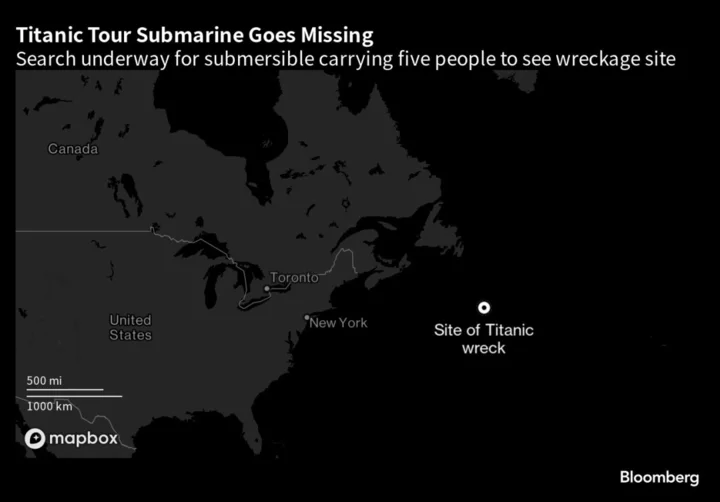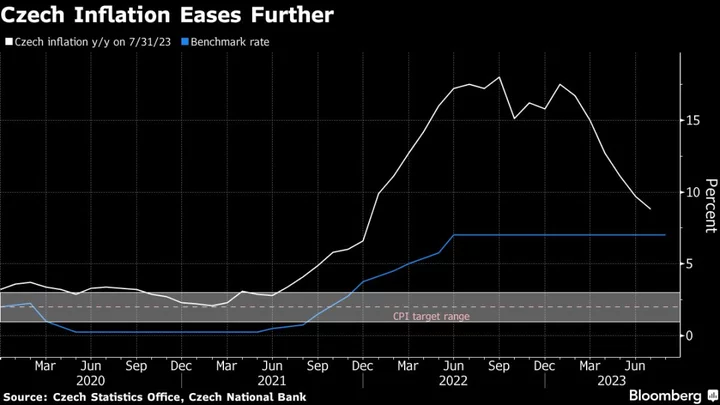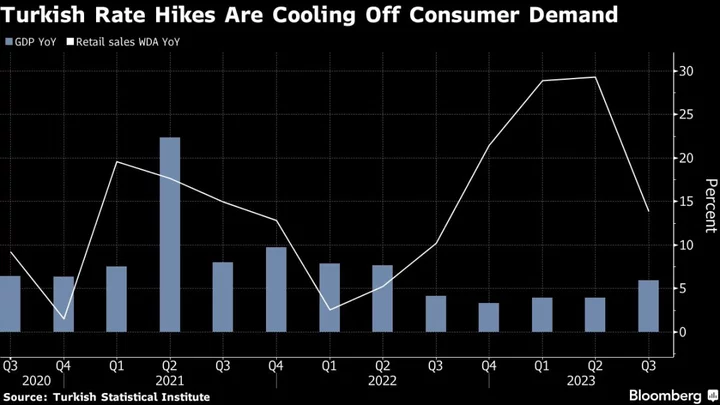Industrial parks and warehouse operators in Mexico, desperate for electricity to power their booming operations, are offering to pay out of their own pockets to build solar panels. But that threatens government control of energy markets.
On top of a strained national grid, demand for electricity is only expected to grow as giants like Tesla Inc and others set up operations amid a trend known as nearshoring, especially in the country’s north.
Mexico caps self-generated renewable energy at 500 kilowatts in what’s called “distributed generation.” Industrial parks association AMPIP is asking the government to expand that limit, one of the workarounds to boost much-needed capacity. As the world slowly moves away from fossil fuels, President Andres Manuel Lopez Obrador has increased the country’s reliance on them at the expense of private sector-led renewable projects.
The increase “would give us that extra push in generation,” said Santiago Villagomez, co-founder and chief executive officer at Energia Real who said his company supports the efforts to increase the cap to 1 megawatt from the current 500 kilowatts. “And it would help us alleviate demand on the grid.”
AMPIP has held “solid and positive” talks with the Energy Ministry and with state-owned utility company Comision Federal de Electricidad (CFE) about the sector’s energy needs in the coming years, said Sergio Arguelles, head of the association and chief executive officer at developer Finsa. “We need to tend to that demand so investments remain in Mexico instead of going elsewhere,” he said, adding that the talks are ongoing.
The Energy Ministry did not respond to a request for comment. The government isn’t opposed to increasing the cap, but its concern is that companies seek to sell their excess energy to other companies for a profit rather than use what’s generated for self supply, according to a government official with direct knowledge of the discussions.
Read More: Engie, Enel and Acciona Wind, Solar Plants Blocked in Mexico
Electricity Monopoly
Currently, the Mexican government has the monopoly over generation and transmission through CFE. In 2022, Mexico’s energy regulator blocked several foreign companies from operating wind and solar plants as it sought to concentrate power in the hands of the utility.
Ana Lilia Moreno, head of nonprofit Mexico Evalua’s Competition and Regulation program, says power supply is becoming an obstacle for investment. “Although Mexico is attracting investments, they’re not as huge as they could be if we had a sound electrical system,” she said.
The cap also means investing in renewable energy is useless for many companies.
“It works for logistics companies,” said Hector Ibarzabal, chief executive officer at Prologis Property Mexico SA, which is part of AMPIP. “Under no circumstance does that work for manufacturers. It doesn’t even work for big logistic companies that need to set up charging stations for electric vehicles outside their facilities.”
Prologis is spending nearly $60 million to line 65% of its buildings with solar panels in a bid to go around Mexico’s energy bottlenecks.
Across the region, countries such as Brazil and Colombia set the cap for distributed generation much higher, with examples ranging from 5 to 10 megawatts, according to Jorge Gandar, co-chief executive officer of solar energy company Luxun. Mexico’s cap “doesn’t have any technical basis,” he said.
The Energy Regulatory Commission or CRE, in charge of permits, isn’t showing signs of letting up. Between 2019 and 2022, the CRE rejected 213 permits related to the power sector, according to Mexico Evalua.
Read More: Mexican Industry Beats Expectations Helped by Nearshoring Boom
Surging Demand
Mexico’s energy consumption has tripled over the last 30 years and that makes solving power supply a top concern for any company looking to set up shop in the country, according to AMPIP’s Arguelles.
After years of under-investment from the CFE, businesses are also spending tens of millions of dollars building electrical substations that reduce voltages when pulling in power from the grid.
Consultants estimate that substations can cost up to $15 million and take years to complete, and they’re a partial solution to the problem, said the Economy Minister for the state of Nuevo Leon, Ivan Rivas. To really solve the problem, the CFE needs to invest in transmission and distribution, Rivas said in an interview in Monterrey, the state’s capital.
“The market doesn’t focus on ‘location, location, location,’ any more. It’s now all about KVAs, KVAs, KVAs,” Arguelles said, referring to the unit used to measure electricity. “It’s really important to provide the land with the appropriate infrastructure to tend to that demand.”
--With assistance from Maya Averbuch and Daniel Cancel.









